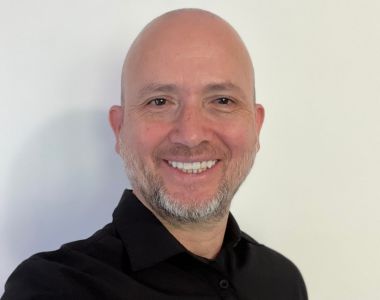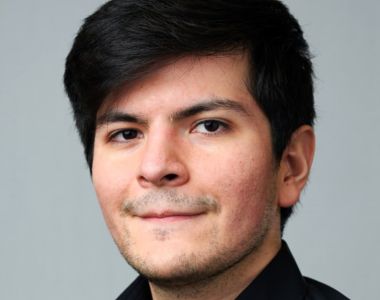Claudio Garcia and Ricardo Monge Neria were among 86 graduate students selected for Department of Energy Office of Science Graduate Student Research award
Two Case Western Reserve PhD candidates are heading to national U.S. Department of Energy (DOE) laboratories to further their thesis work, learn alongside DOE laboratory scientists and then bring new insights and techniques back to CWRU.
Claudio Garcia and Ricardo Monge Neria, both CWRU PhD candidates in the Department of Physics, were both selected for the DOE Office of Science Graduate Student Research (SCGSR) program, which provides world-class training and access to state-of-the-art facilities and resources at host DOE national laboratories.
Garcia and Monge Neria were among 86 graduate students—representing 31 states and Puerto Rico—who were selected in the SCGSR program’s 2023 Solicitation 2 cycle, according to a recent announcement from the DOE.
“The Graduate Student Research program is a unique opportunity for graduate students to complete their PhD training with teams of world-class experts aiming to answer some of the most challenging problems in fundamental science,” said Harriet Kung, acting director of the DOE’s Office of Science. “Gaining access to cutting-edge tools for scientific discovery at DOE national laboratories will be instrumental in preparing the next generation of scientific leaders.”
The selected projects align with the Office of Science’s mission and address critical energy, environmental and nuclear challenges at a national and international level.

Claudio Garcia
Garcia, a PhD candidate starting his fifth year in the fall, said the SCGSR program will help take his research to new heights.
He’ll work at National Renewable Energy Laboratory (NREL) for six months this summer, a collaboration that “is going to enhance my knowledge in a deeper, fundamental way,” he said.
In his research on electronic structures and energy efficiency, Garcia uses Questaal, a suite of first-principles electronic structure programs with codes that can help researchers answer condensed-matter theory questions about structures. Through the SCGSR program, he’ll conduct research at NREL alongside subject-matter experts who can help him learn new powerful tools that have recently been implemented in Questaal.
“I’ll be learning those techniques there under Dr. [Swagata] Acharya [at NREL], …trying to get the best knowledge from him, since he’s the primary source of the code,” Garcia said. “Once I have a full understanding, then I can come and train my group in how to best extract the data, best interpret the data, so that we can have a better understanding of this new technique.”
In addition to Swagata Acharya (Researcher III Computational Science, SERF), Garcia will also work with Mark van Schilfgaarde (Research Advisor III Material Science), who is also well-versed in the code.
The technique will help Garcia better predict the critical temperatures of an electronic structure, which builds upon his previous research to understand the electronic structure Lithium V2O5.
Ultimately, this research can support sustainable energy applications.
“Anything that is electronic, it would be nice to efficiently put a little bit of green in the footprint,” he said.
Garcia works in the lab of Walter Lambrecht, the Perkins Professor of Physics at CWRU.
Ricardo Monge Neria

Monge Neria is a fifth-year PhD candidate studying techniques to optimize chemical separations. He is primarily looking at liquid chromatography—the laboratory technique for separating a mixture into its individual parts—as well as rare-earth separations.
“Our work focuses on using single-molecule scale information, like adsorption kinetics, to inform and try to develop predictive models of larger scale separations measurements,” he said.
He works in the lab of Lydia Kisley, assistant professor in the Departments of Physics and Chemistry.
By probing these chromatography materials and systems in-situ and at small scales, Monge Neria’s goal is to better understand how they work and reduce the amount of waste traditionally associated with larger scale experiments, he explained.
Through the SCGSR program, Monge Neria will work at the Lawrence Livermore National Laboratory. While there, he’ll study protein-based approaches for the separation of crucial rare-earth metals, including measurements for an application to remove metals in waste streams.
“This would be my first experience with protein expression and purification, as well as allow me to work directly with and learn a multitude of chemistry and chemical engineering techniques,” Monge Neria said. “For me this is a great chance to substantially expand the scope of my studies and experience work at a national laboratory, much better preparing me for my career after the PhD.”
